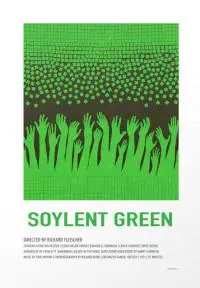When it comes to telling a great story, there are many essential elements. One of the more advanced techniques, whether it’s in your short story or your novel, is foreshadowing. Today we’re going to talk about what foreshadowing is and how it can make your stories more tense, believable, layered, and effective.
DEFINED
From Wikipedia:
Foreshadowing is a literary device in which a writer gives an advance hint of what is to come later in the story. Foreshadowing often appears at the beginning of a story, or a chapter, and it helps the reader develop expectations about the upcoming events. A writer may implement foreshadowing in many different ways. Some of these ways include: character dialogues, plot events, and changes in setting. Even the title of a work or a chapter can act as a clue that suggests what is going to happen. Foreshadowing in fiction creates an atmosphere of suspense in a story, so that the readers are interested and want to know more. This literary device is generally used to build anticipation in the minds of readers about what might happen next, thus adding dramatic tension to a story. Moreover, foreshadowing can make extraordinary and bizarre events appear credible, some events are predicted in order to make the audience feel anticipated for them
Okay, column done, it’s all said right here. LOL. Just kidding. Let’s expand on these thoughts, as there are some key points that I want to address.
TENSION
Foreshadowing can increase the tension in your work. When I think about horror especially (see my past column on terror vs horror), what works well is NOT the cat jumping in the window, or mere violence—it’s the layers we create, the hints and clues we drop that lead to the revelation, the horror finally seen. It’s the breadcrumbs we drop on the way into the forest, so we can find our way out. It’s the pieces of something larger that we can’t understand yet. It’s a strange new combination of items that lead us to something unexpected.
![]() ADDING IT UP
ADDING IT UP
If you’ve taken any of my classes—but especially Contemporary Dark Fiction or my Advanced Creative Writing Workshop—then you’ve probably heard me talk about getting to the number ten, through addition. Feel free to skip this part. LOL. What I mean is if you want to get to TEN (and let’s say TEN actually means that Soylent Green is people, or your protagonist is actually dead, or the creature in the basement is actually a descendent of Cthulhu) you have to do it in steps. It’s like telling vs. showing. You can’t just shout SCARY—hey dude, the house is SCARY. That won’t work. Instead of shouting TEN, we need to foreshadow, hint, give the reader clues. I also don’t like 5 + 5 = 10. Too big, too chunky, not subtle at all. NO, what I want is 1 + 1 + 2 + 1 + 3 + 1 + 1 = 10. Bit by bit, little by little, build to the reveal.
THE SLOW REVEAL
Even though my talented professor in my MFA program, Dale Ray Phillips, used to say to me, “Richard, leave the slow reveal to the strippers,” I don’t agree. I LIKE the slow reveal. It’s not just through setting—hinting that this house may be haunted by making weird noises at night (it’s just the pipes settling), leaving a ton of dead flies on a windowsill in a cold room (it’s just winter), or letting the stench in the basement slowly expand (it’s just mold or a dead mouse). It’s trying to explain more complex ideas—how do you show that your protagonist is possessed by a demon, has multiple personalities, or is being eaten alive by some alien host that lives in his liver? Bit by bit.
HOW FORESHADOWING CAN EARN THOSE IMPORTANT MOMENTS
So we’ve already been talking about this, right? Hints, clues, adding it up, slowly revealing things. Foreshadowing has many purposes, and one of the most important is earning those visceral moments in your story—the veil dropping, the truth revealed, the ending resonating like a clanging of a gong. Let’s talk about that.
One problem I find in stories, especially those stories that get surreal, weird, or abstract—tales that tap into cosmic horror and Lovecraftian prose—is that there are moments, quite often the ending, that aren’t earned. What we don’t want is a deus ex machina out of nowhere, saving the day, or revealed to be the true horror. What we don’t want is that twist at the end that defines the story, instead of that gradual addition, reveal, accumulation of facts and details that shows us the full truth. What we don’t want is to get to the end, read it, and say, “What the hell was that? What happened? I don’t get it.” This is why foreshadowing is so important.
Obviously, in order to foreshadow, you must place these clues, hints, and details EARLIER in your story or novel. So that means if you have a 5,000-word story, you can’t drop in that fact, character, or imagery at the 4,500-word mark. That’s too late. It starts with your title, then the first line of your story (your narrative hook), your first paragraph, your first page (and in a novel, with the first character). Start with subtle references, don’t give it all away, balancing the external conflict with the internal conflict—what does it mean that the flies are dying in huge numbers in that room upstairs, AND, what emotions does it bring up, memories of your childhood, and that event that scarred you for life. But foreshadowing isn’t just early, it’s often. Scatter the details, be subtle, put together combinations that by themselves don’t mean much, but together are ominous, unsettling, and weird.
 So what do I mean about earning that ending, or those pivotal moments? Let me elaborate. There is a twist ending, where you shout BAM, THIS THING, and we are shocked, and surprised, but don’t understand how we got there. It is out of left field, not connected to anything, that deus ex machina clunky technique. And the weirder, more abstract, and more bizarre your story is the MORE foreshadowing you need to do. When you EARN an ending, it’s more like us saying, “OMG, okay, yes, I wondered what the spider symbolism meant,” or “That explains the detached actions of the protagonist throughout the story—turns out they were a robot!” It’s an epiphany (and why the denouement is so important), it’s an accumulation of facts, it’s a comprehension that’s been eluding us the entire story, novel, or film. And HERE IT IS NOW, in its horrific, wondrous glory. NOW it all makes sense.
So what do I mean about earning that ending, or those pivotal moments? Let me elaborate. There is a twist ending, where you shout BAM, THIS THING, and we are shocked, and surprised, but don’t understand how we got there. It is out of left field, not connected to anything, that deus ex machina clunky technique. And the weirder, more abstract, and more bizarre your story is the MORE foreshadowing you need to do. When you EARN an ending, it’s more like us saying, “OMG, okay, yes, I wondered what the spider symbolism meant,” or “That explains the detached actions of the protagonist throughout the story—turns out they were a robot!” It’s an epiphany (and why the denouement is so important), it’s an accumulation of facts, it’s a comprehension that’s been eluding us the entire story, novel, or film. And HERE IT IS NOW, in its horrific, wondrous glory. NOW it all makes sense.
Ideally, you want the reader, the viewer, to get to the climax, that change, that resolution, and denouement, at the exact same time as the author. But that’s hard to do. Some people are just smart, intuitive, or familiar with your genre and see it coming. That’s why it’s so hard to be original, innovative, and unique. We push to avoid being seen, recognized, keeping the audience at arms-length. But we have to pull them in every now and then and whisper in their ear, tell them a secret, hint at something terrible. So when I talked about the bread crumbs, the clues, the adding up to TEN, that’s what I’m talking about.
ABSTRACT VS CONCRETE
The last thing I’ll mention here is the use of abstract content vs. the concrete. Use both. Throughout your stories, in order to foreshadow, we need to see the little details that will add up to this revelation—the screwdriver, the motherboard, the mannequins, the wardrobe of women’s clothing, the books on building an android. But we also need to use more abstract elements—emotions, feelings, and concepts. When I think about the abstract, I think about things that we can’t hold, touch, see, hear, or smell. If something is watching your protagonist, how can you show that? With concrete details, it’s the weird paw prints in the flower garden, the scat out in the woods that is odd, the dead animals left torn apart on the doorstep. With the abstract it’s the feeling of being watched, the way that makes you feel uncomfortable (or perhaps, excited!), the way it triggers memories of fate, and destiny, and events that can’t be avoided. Mix them together to hint at what’s coming.
IN CONCLUSION
In order to foreshadow, you need to give us clues, hints, images, symbols, facts, sensory details, and emotions from the title and hook early on, throughout the entire narrative. If you can balance the abstract and the concrete, then you can earn your ending, and leave your readers shocked, moved, horrified, and filled with wonder. Whatever unique combination of emotions you create, and leave us with, if you set the stage, and then reveal the truth slowly over time, you have a good chance of blowing our minds. Good luck!

About the author
Richard Thomas is the award-winning author of seven books: three novels—Disintegration and Breaker (Penguin Random House Alibi), as well as Transubstantiate (Otherworld Publications); three short story collections—Staring into the Abyss (Kraken Press), Herniated Roots (Snubnose Press), and Tribulations (Cemetery Dance); and one novella in The Soul Standard (Dzanc Books). With over 140 stories published, his credits include The Best Horror of the Year (Volume Eleven), Cemetery Dance (twice), Behold!: Oddities, Curiosities and Undefinable Wonders (Bram Stoker winner), PANK, storySouth, Gargoyle, Weird Fiction Review, Midwestern Gothic, Gutted: Beautiful Horror Stories, Qualia Nous, Chiral Mad (numbers 2-4), and Shivers VI (with Stephen King and Peter Straub). He has won contests at ChiZine and One Buck Horror, has received five Pushcart Prize nominations, and has been long-listed for Best Horror of the Year six times. He was also the editor of four anthologies: The New Black and Exigencies (Dark House Press), The Lineup: 20 Provocative Women Writers (Black Lawrence Press) and Burnt Tongues (Medallion Press) with Chuck Palahniuk. He has been nominated for the Bram Stoker, Shirley Jackson, and Thriller awards. In his spare time he is a columnist at Lit Reactor and Editor-in-Chief at Gamut Magazine. His agent is Paula Munier at Talcott Notch. For more information visit www.whatdoesnotkillme.com.
 ADDING IT UP
ADDING IT UP







